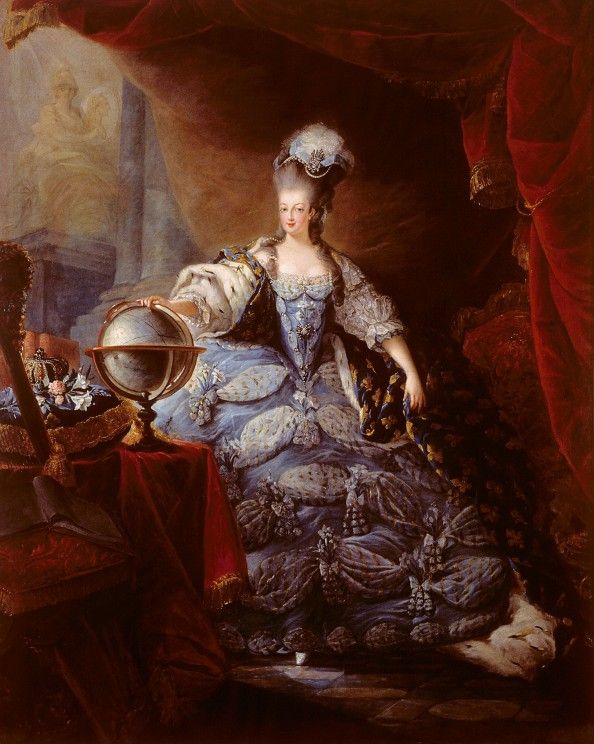Born as the last daughter to the King and Queen of Austria, Marie Antoinette was not meant to rule but to marry wisely. And so, it happened. At the young age of fourteen, she was wed off to become the Dauphine of France, an alliance made for purely diplomatic reasons.
“I am terrified at the idea of not being loved in France.”
These words, confided by a daughter to her mother, clearly depict the fears and insecurities of a young girl feeling alienated in a foreign land. They are especially ironic, as they contradict the image of Marie Antoinette as an indifferent and lavish queen, one who allegedly advised her starving people to eat cakes if they had no bread.
Slandered, vilified, insulted, and ultimately accused of treason, she became the face of a falling nation and was executed by guillotine on 16 October 1793. This article aims to re-examine her image, not to absolve her of every charge but to retrace the historical pattern of blaming women in times of crisis.
As a young princess of the Habsburg court in Vienna, Marie Antoinette’s education focused primarily on etiquette, religion, and basic literacy rather than intellectual or political development, an early blunder in the upbringing of a woman destined to become the Dauphine.
Abbé de Vermond, the tutor sent by the French court to prepare her for her new role, found her inadequately educated. According to Madame Campan, Vermond “took pains only to render himself beloved by his pupil, and… troubled himself very little with the care of instructing her.”
In a court where political finesse and diplomatic skills were required to survive, Marie’s inclinations leaned towards music, theatre, and leisure. Her lack of political ambition, combined with the rigid scrutiny she faced as a foreign princess, left her increasingly alienated. In a letter to Count Mercy d’Argenteau, the Austrian ambassador, she confessed, “I am more and more disgusted by the intrigues of this court. I long for a quiet life.” Clearly, she could not meet the impossible expectations of femininity and intellect that the French court imposed upon her.
Ever since Marie arrived at Versailles, libelles—the infamous pamphlets—had been rife with outrageous allegations of adultery, homosexuality, and incest. One pamphlet, Vie de Marie-Antoinette d’Autriche, accused her of incest with her own brother and presented her as the corrupting force at France’s moral centre.
These allegations were laced with xenophobic rhetoric, branding her a “German Vice,” a slur that reflected the deep-rooted intolerance of the French people toward a foreign queen.
By the summer of 1787, she had earned the nickname “Madame Deficit,” symbolising the extravagance of the royal court. She became the emblem of France’s financial problems, even though the economic crisis stemmed from far greater causes, such as the unchecked aid of 1.3 billion livres for the American Revolution and the crippling debts from the Seven Years’ War.
The Diamond Necklace Affair (1784–85) drove the final nail in Marie’s coffin, as from that point onwards, poets, pamphleteers, and political critics blurred the line between scandal and fantasy, depicting her as a corrupt, immoral, and deceitful figure.
A foreign woman caught in a political maelstrom amid an atmosphere of misogyny and xenophobia, Marie Antoinette became the perfect scapegoat. Branded a “foreign harlot,” the blame for an entire monarchy’s downfall was pinned on her.
In this crucible, her life, lavish as it may have been, was far more vilified through propaganda than through reality.
History bears the scars of women who took the blame for the fall of empires. Marie Antoinette was neither the first to be cast as a villain, nor will she be the last.
Centuries before her, the Queen of Egypt, Cleopatra, was painted as a temptress, repeatedly branded and maligned for her seduction rather than her statecraft. Anne Boleyn, accused of incest, was cast out by her own husband as if she had never belonged.
In modern times, women like Benazir Bhutto and Maryam Nawaz have been repeatedly sexualised and judged more harshly than their male counterparts. By turning public anger toward women, men often escape the blame for their own failures.
When a nation weakens, when a crisis hits, a woman becomes the lightning rod. In Marie Antoinette’s case, who, in reality, held very little political power, this strategy proved tragically effective.
In recent decades, Marie Antoinette’s image has finally been represented with more nuance, beyond the heartless, cake-eating queen stereotype.
Antonia Fraser’s biography and Sofia Coppola’s 2006 film show her extravagance as a form of escapism, capturing the emotional isolation and performative pressures of Versailles that were too much for a teenager to handle.
Though she lived a lavish life, her kindness shines through in the heartfelt letters to her mother and her efforts to support orphans and the poor.
When slandered, she often chose silence over defence. At her trial in October 1793, she famously said, “If I have not replied, it is because nature refuses to answer such a charge brought against a mother. I appeal to all mothers here.” This distressing statement reveals the emotional cruelty she endured as she finally bade farewell to her “poor children.”
Marie Antoinette’s story is far from a myth or mere tale. It is a timeless lesson on how women are demonised and scapegoated during times of crisis.
Though her execution marked the French Revolution, the revolution in mentality, especially regarding misogyny, remains incomplete.
Even today, in our own country, when a woman is murdered, the first assumption often is that she must have been a public figure living a ‘sinful’ life. Thus, one woman’s death is manipulated into a moral victory.
This pattern of blaming women deflects attention from systemic failures and spreads harmful stereotypes.
As historian Antonia Fraser reminds us, “It is essential to look beyond the myth and recognise the humanity beneath.”
Therefore, we are in a dire need of resisting simplistic narratives and understanding the complex realities, particularly concerning women, as it is not only an act of justice but a necessary step toward genuine progress.
















